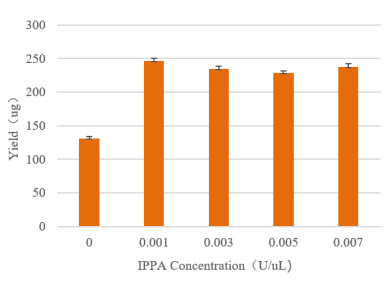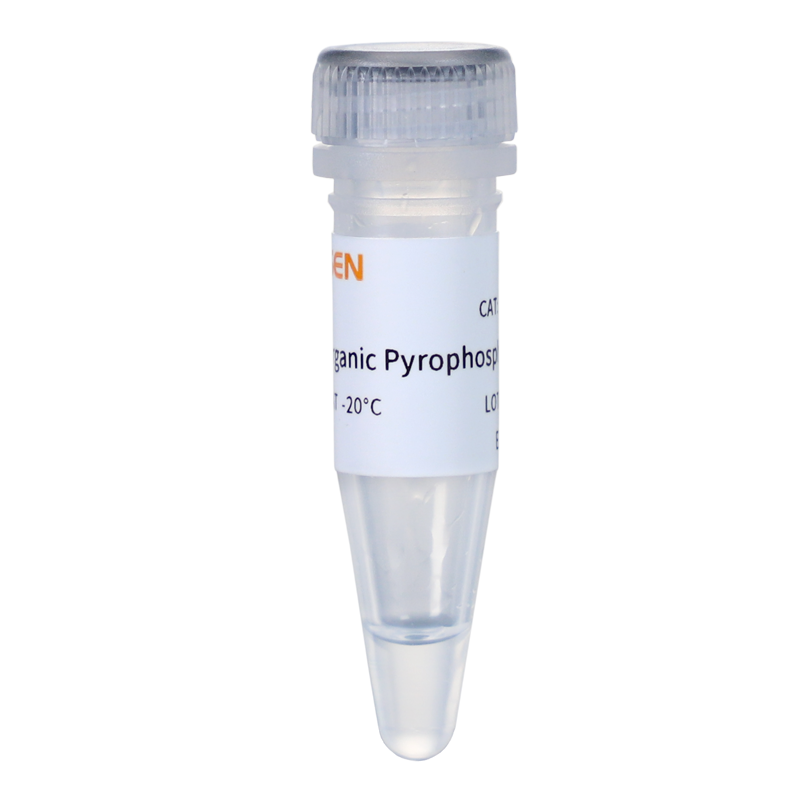Pyrophosphatase, Inorganic GMP-grade (1 U/μL)
Description
This product is an inorganic pyrophosphatase derived from recombinant expression in Escherichia coli. It is an enzyme that can catalyze the conversion of one molecule of pyrophosphate into two molecules of phosphate ions. This is a high-energy reaction, so this reaction can be coupled to some thermodynamically unfavorable transformations in order to drive these transformations to completion. Inorganic pyrophosphatase (PPase) catalyzes the hydrolysis of inorganic pyrophosphate to orthophosphate. In molecular biology, it can be used to increase RNA yield in reverse transcription reactions. This product is produced in accordance with GMP process requirements, and the product is provided in liquid form.
Feature
- Isolated from a recombinant source
- Tested for the absence of endonucleases, exonucleases, RNases
- Increasing RNA yield in transcription reaction; enhancing DNA replication
Application
- DNA sequencing reaction
- PCR and single-base extension reaction
- In vitro transcription processes
Specification
| Source | Recombinant E.coli with Pyrophosphatase gene from yeast |
| Optimum Temperature | 25℃ |
| Storage Buffer | 50 mM Tris-HCl pH 7.9,100 mM NaCl,10 mM DTT,1 mM EDTA,0.1% (v/v)TritonX-100,50%(v/v)glycerin |
| Unit Definition | One unit (U) is the amount of enzyme needed to catalyze the hydrolysis of PPI per minute to produce 1 μmol Pi. (The standard reaction is: 500 μL system contains 100 mM Tris-HCl pH7.2, 2 mM MgCl2, 2 mM Ppi; reaction at 25℃ for 10 min) |
Components
| Components No. | Name | 10620ES10 (10 U) | 10620ES60 (100 U) | 10620ES80 (1,000 U) | 10620ES99 (40 KU) |
| 10620 | Pyrophosphatase, Inorganic GMP-grade (1 U/μL) | 10 μL | 100 μL | 1 mL | 40 mL |
Shipping and Storage
The Pyrophosphatase, Inorganic GMP-grade products are shipped with dry ice and can be stored at -15℃ ~ -25℃ for one year.
Figures

Figures 1. The relationship between RNA yield and IPPA concentration in vitro transcription
[1] Li Q, You J, Qiao T, Zhong DB, Yu X. Sodium chloride stimulates the biomass and astaxanthin production by Haematococcus pluvialis via a two-stage cultivation strategy. Bioresour Technol. 2022;344(Pt A):126214. doi:10.1016/j.biortech.2021.126214(IF:9.642)
[2] Ma Y, Cheng B, Li Y, et al. Protective Effect of Nanoselenium on Renal Oxidative Damage Induced by Mercury in Laying Hens. Biol Trace Elem Res. 2022;200(8):3785-3797. doi:10.1007/s12011-021-02956-z(IF:3.738)
Catalog No.:*
Name*
phone Number:*
Lot:*
Email*
Country:*
Company/Institute:*

